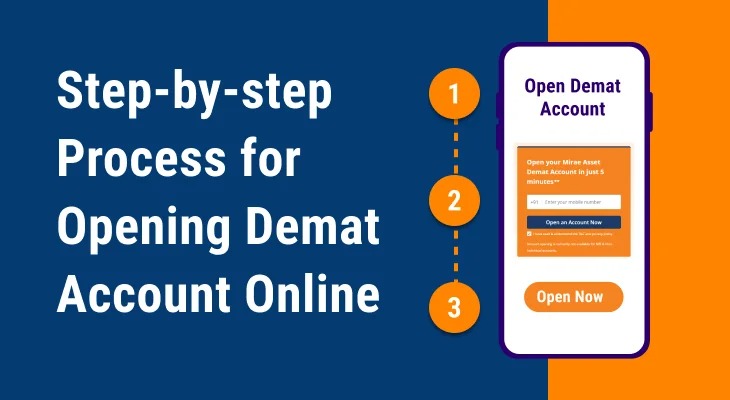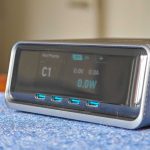In the world of modern investing, a Demat account has become an essential tool for anyone looking to participate in the Indian stock market. A Demat account, short for “dematerialized account,” is an electronic account that holds your shares and securities in a digital format. This eliminates the need for physical share certificates and makes trading in the stock market more convenient, secure, and efficient.
Opening a Demat account is a simple process that can be completed online or by visiting the office of a Depository Participant (DP). A DP is an agent of the depository (either NSDL or CDSL) that provides depository services to investors. DPs can be banks, stockbrokers, or online financial services providers.
In this comprehensive guide, we will walk you through the steps involved in opening a Demat account in India. We’ll cover everything from choosing a DP and filling out the account opening form to providing the necessary documents and linking your trading and bank accounts. By the end of this guide, you’ll have a clear understanding of how to open a Demat account and start investing in the Indian stock market.

Step 1: Choose a Depository Participant (DP)
The first step in opening a Demat account is to choose a Depository Participant (DP). There are two depositories in India: the National Securities Depository Limited (NSDL) and the Central Depository Services Limited (CDSL). Both depositories offer similar services, and your choice of DP will largely depend on factors like proximity, fees, and the services offered.
When choosing a DP, consider the following factors:
- Reputation and Reliability: Choose a DP with a good reputation and a track record of reliable service. You can research DPs online or ask for recommendations from friends or family members who have DP accounts.
- Fees and Charges: Compare the fees and charges of different DPs, including account opening fees, annual maintenance charges, and transaction fees. Look for a DP that offers competitive pricing without compromising on service quality.
- Online Services: If you prefer to manage your investments online, choose a DP that offers a user-friendly online platform and mobile app. This will allow you to access your account, view your holdings, and place trades conveniently.
- Customer support: Take into account the DP’s level of customer support. Look for a DP with responsive and knowledgeable customer service representatives who can assist you with any questions or issues you may have.
Step 2: Fill Out the Account Opening Form
Once you’ve chosen a DP, the next step is to fill out the account opening form. You can usually download the form from the DP’s website or visit their office to obtain a physical copy. The account opening form will require you to provide various personal and financial details, including:
- Your name, address, and contact information
- Your PAN (Permanent Account Number)
- Your bank account details
- Your occupation and income details
- Your trading preferences and investment goals
Make sure to fill out the form accurately and completely. Any discrepancies or missing information may delay the account opening process.
Step 3: Provide the necessary documents.
To open a Demat account, you’ll need to provide certain documents to your DP. These documents serve as proof of your identity and address and help the DP comply with legal and regulatory requirements. The documents you’ll typically need to provide include:
- Proof of Identity: A copy of your PAN card, Aadhaar card, passport, or driver’s license.
- Proof of Address: A copy of your utility bill, bank statement, or passport.
- Passport-sized Photograph: A recent passport-sized photograph of yourself.
Some DPs may require additional documents, such as proof of income or a cancelled check. Make sure to check with your DP for their specific documentation requirements.
Step 4: Sign the Agreement
After submitting your account opening form and necessary documents, you’ll need to sign the Demat account agreement. This agreement outlines the terms and conditions of your Demat account, including your rights and responsibilities as an account holder, the fees and charges associated with the account, and the rules and regulations governing the use of the account.
Read the agreement carefully before signing it. If you have any questions or concerns, don’t hesitate to ask your DP for clarification. Once you’ve signed the agreement, your DP will process your application and open your Demat account.
Step 5: Pay the Fees
Opening a Demat account usually involves paying certain fees and charges. These may include:
- Account Opening Fee: A one-time charge by the DP for opening your Demat account.
- Annual Maintenance Charge (AMC): A yearly fee that the DP assesses for maintaining your Demat account.
- Transaction Fees are fees that the DP levies for each transaction you make, such as buying or selling shares.
The fees and charges may vary depending on the DP you choose. Make sure to inquire about the fees and charges before opening your account to avoid any surprises later on.
Step 6: Link Your Trading and Bank Accounts
To start trading in the stock market using your Demat account, you’ll need to link it with your trading account. A trading account is an account that you open with a stockbroker and use to place buy and sell orders in the stock market. You’ll also need to link your bank account to your Demat account to facilitate financial transactions, such as paying for shares or receiving dividends.
To link your trading account, you’ll need to provide your Demat account details to your stockbroker. They will then map your Demat account to your trading account, allowing you to seamlessly trade in the stock market.
To link your bank account, you’ll need to provide your bank account details, such as your account number and IFSC code, to your DP. They will then link your bank account to your Demat account, enabling you to make payments and receive funds electronically.
Conclusion
Opening a Demat account is a crucial step for anyone looking to invest in the Indian stock market. By following the steps outlined in this guide, you can easily open a Demat account with a DP of your choice and start trading in shares and securities.
Remember to choose a reliable DP, fill out the account opening form accurately, provide the necessary documents, sign the agreement, pay the required fees, and link your trading and bank accounts. With a Demat account in place, you’ll be well on your way to building a diversified investment portfolio and potentially earning attractive returns in the stock market.
As with any investment, it’s important to educate yourself about the risks and rewards of investing in the stock market. Make sure to research the companies you’re interested in, diversify your portfolio, and seek professional advice if needed. With a Demat account and a sound investment strategy, you can unlock the wealth-building potential of the Indian stock market and work towards achieving your financial goals.










Add Comment